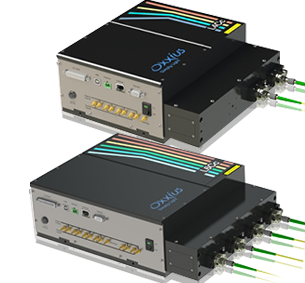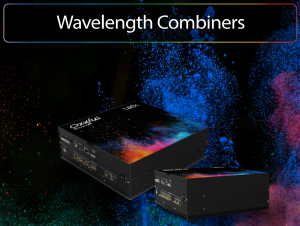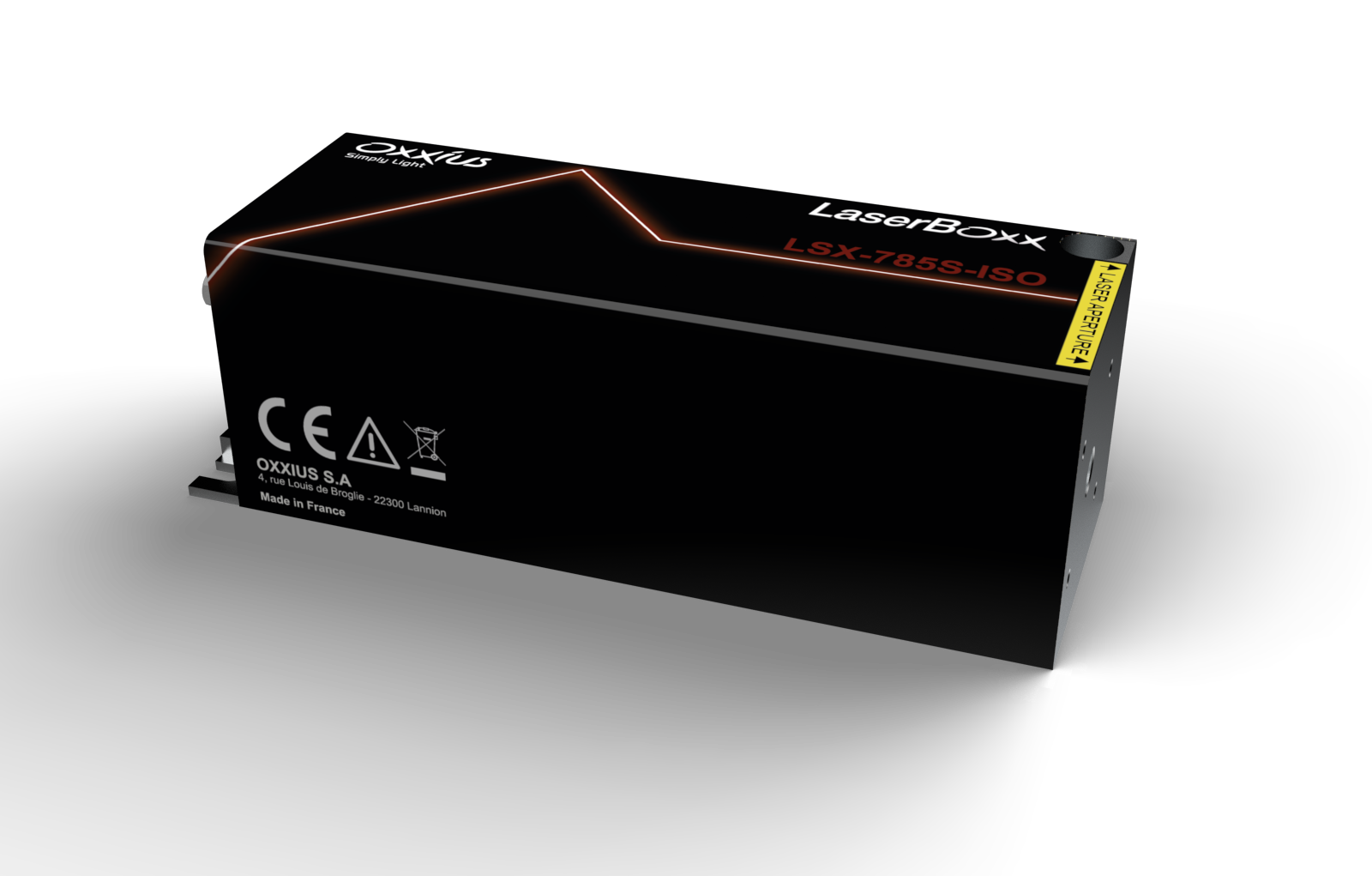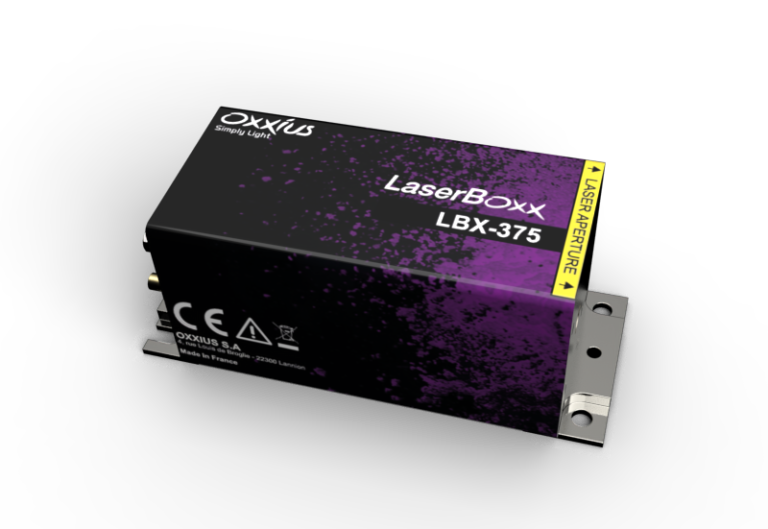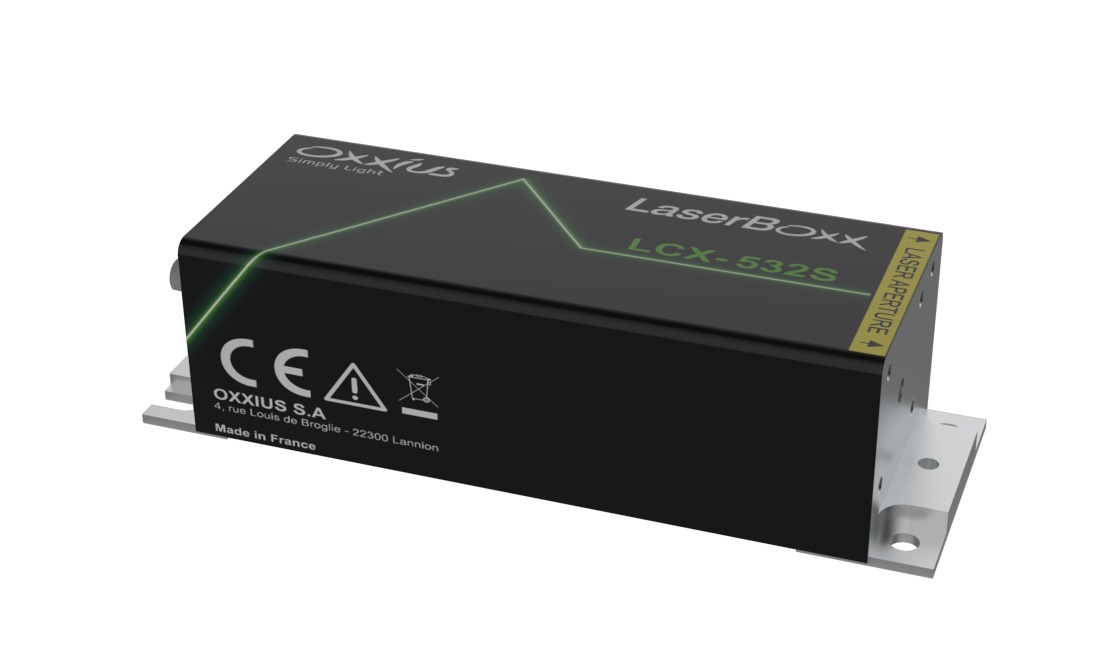LXC-Combiner
Laser Combiner, Single mode, up to 6 Wavelengths, 375-1064nm, up to 500mW
Key Features:
- Up to 7 combined wavelengths
- Up to 500 mW per wavelength (TEM00 beam)
- Up to 4 output ports
- Direct modulation; analog, digital, or both combined
- Ultra Low Noise ≤ 0.2 %
- Proven long-term stability
- Modular optical design for easy maintenance
- USB, Ethernet, and Windows Graphic User Interfaces
There are many different package types, wavelengths, output powers, and options to choose from. Get help selecting the right configuration for you!
POPULAR CONFIGURATIONS:
Picture |
Part Number |
Part Description |
Datasheet |
|
|---|---|---|---|---|

|
L4Cc-CSB-1311-405-488-561-638-250 |
Laser Combiner: 405nm (50mW), 488nm (50mW), 561nm (50mW), 638nm (100mW) |
|
Get Quote |

|
L4Cc-CSB-1311-405-488-561-638-400 |
Laser Combiner: 405nm (100mW), 488nm (100mW), 561nm (100mW), 638nm (100mW) |
|
Get Quote |

|
L4Cc-CSB-1311-405-488-561-638-630 |
Laser Combiner: 405nm (180mW), 488nm (150mW), 561nm (150mW), 638nm (150mW) |
|
Get Quote |

|
L4Cc-CSB-1311-405-488-561-638-880 |
Laser Combiner: 405nm (300mW), 488nm (200mW), 561nm (200nm), 638nm (180mW) |
|
Get Quote |

|
L4Cc-CSB-1311-405-488-532-638-250 |
Laser Combiner: 405nm (50mW), 488nm (50mW), 532nm (50mW), 638nm (100mW) |
|
Get Quote |

|
L4Cc-CSB-1311-405-488-532-638-400 |
Laser Combiner: 405nm (100mW), 488nm (100mW), 532nm (100mW), 638nm (100mW) |
|
Get Quote |

|
L4Cc-CSB-1311-405-488-532-638-630 |
Laser Combiner: 405nm (180mW), 488nm (150mW), 532nm (150mW), 638nm (150mW) |
|
Get Quote |

|
L4Cc-CSB-1311-405-488-532-638-880 |
Laser Combiners: 405nm (300mW), 488nm (200mW), 532nm (200mW), 638nm (180mW) |
|
Get Quote |
The LXC-Combiner is a compact, highly customizable, and flexible all-in-one laser combiner that provides the widest variety of wavelength options, up to 7 different laser lines, direct modulation on every source, SLM capabilities, proven long-term stability, and many other advanced features. The LXC-Combiner is a fully integrated package that dichroicly beam combines up to 7 different diodes and/or DPSS lasers and couples them into either a single output channel or multiple independent channels, which is often preferable when utilizing both ultraviolet and visible or infrared lasers in the same unit. They are microprocessor-controlled and can be directly modulated through analog and digital I/O interfaces or controlled by a computer graphical user interface via a USB connection. The optional extension modules provide the ultimate level of flexibility by integrating fast-switching output ports, adjustable split power, and independent power and modulation control/adjustment of each individual wavelength. Our extension module is the unrivaled solution to seamlessly add new functionalities to these combiners. All functionalities are embedded into the electronics board as standard. Adding a second AOM or any other advanced features is effortless, simply plug it in and activate it.
Our engineers had versatility in mind when designing the L4Cc and the L6Cc combiners. The platform’s modular design allowed for the L6Cc to be the most compact and flexible all-in-one multicolor laser source. These combiners are available in turnkey or OEM versions to address both systems integrators’ and laboratory users’ needs and are field upgradeable to evolve with your changing needs, helping to preserve your investment.
If you do not see exactly what you need, please contact us!
Many configurations and optional attachments available:
- Up to 7 combined wavelengths
- Up to 500 mW per wavelength (TEM00 beam)
- Up to 4 output ports (with extension module)
- Direct modulation on every source: analog, digital, or both combined
- Accousto-optic modulator (AOM) available, delivering a linearized output
- High-efficiency Polarization Maintaining (PM) fiber coupling option
- Electro-mechanical shutter on each output and each DPSS laser.
- Fully accessible from µManager
- USB, Ethernet, and Graphic User Interfaces
- Flexible configuration with extension modules
- Dual output ports
- Fast-switching mirror
- AOTF-based modulation
- Proven long-term stability
- Comprehensive optical design for easy maintenance
- Field upgradeable
- The electronic board embeds all functionalities as standard
- A large choice of connectors and collimators is available to interface with most microscope ports
Learn more about our wavelength combiners by clicking the picture below!
Benefits:
- Customizable and Flexible Laser Combiner – Our highly customizable, compact, and flexible all-in-one multicolor laser combiner is designed to meet your unique needs:
- Choose from a wide variety of wavelength options, including SLM and high-power options, to achieve your desired output.
- Up to 7 different laser lines provide you with the flexibility to handle a variety of applications.
- Whether you need an OEM or Plug & Play solution, our laser combiner has you covered.
- Direct modulation on every source, including analog, digital, or both combined, gives you precise control over your output.
- Our acousto-optic modulator (AOM) delivers a linearized output for even more precise modulation.
- Our high-efficiency Polarization Maintaining (PM) fiber coupling option ensures maximum power transmission while maintaining polarization.
- The remote controller (RemoteBoxx) brings control elements at hand and the status within sight, making it easy to operate and monitor your laser combiner.
- Laser Output Options – Our laser combiner offers a range of output options to meet your specific needs:
- Our single-mode, multimode, and polarization-maintained fiber options enable you to optimize your output for your specific application.
- The electro-mechanical shutter on each output and each DPSS laser provides precise control over your output and helps prevent unwanted exposure.
- USB and Ethernet interfaces make it easy to connect to your computer or other devices.
- The platform features up to two independent channels and can provide up to four output ports, giving you even more flexibility in how you use your laser combiner.
- Compatibility and Expandability – Our laser combiner is designed to work seamlessly with a variety of setups and can be easily expanded to meet your future needs.
- The L4Cc and L6Cc are compatible with μManager environment, as well as our standalone control software, providing you with flexible control options.
- The combiner is ready for docking with our pre-aligned extension modules, making it easy to add new functionality to your setup.
- Our extension module is the unrivaled solution to seamlessly add new functionalities to Oxxius combiners, enabling you to easily upgrade and expand your setup.
- With the largest choice of wavelength and power from Oxxius’s LaserBoxx models or third-party laser sources, you can easily integrate our laser combiner into your existing setup.
- Our large choice of connectors and collimators is available to interface with most microscope ports, ensuring compatibility with a wide range of equipment.
In summary, RPMC offers a range of highly customizable and flexible laser combiners that provide a wide variety of wavelength options, up to 7 laser lines, and advanced features like direct modulation on every source and AOM linearization. Whether you need high-power options, SLM capabilities, or easy integration with microscopy applications, we have a solution that will meet your specific requirements and exceed your expectations. Choose the LaserBoxx LXCc series for reliable, efficient, and versatile laser combiner solutions that will help you achieve your goals with confidence.
If you have any questions or need more information, please contact us.

 SHIPS TODAY
SHIPS TODAY 
